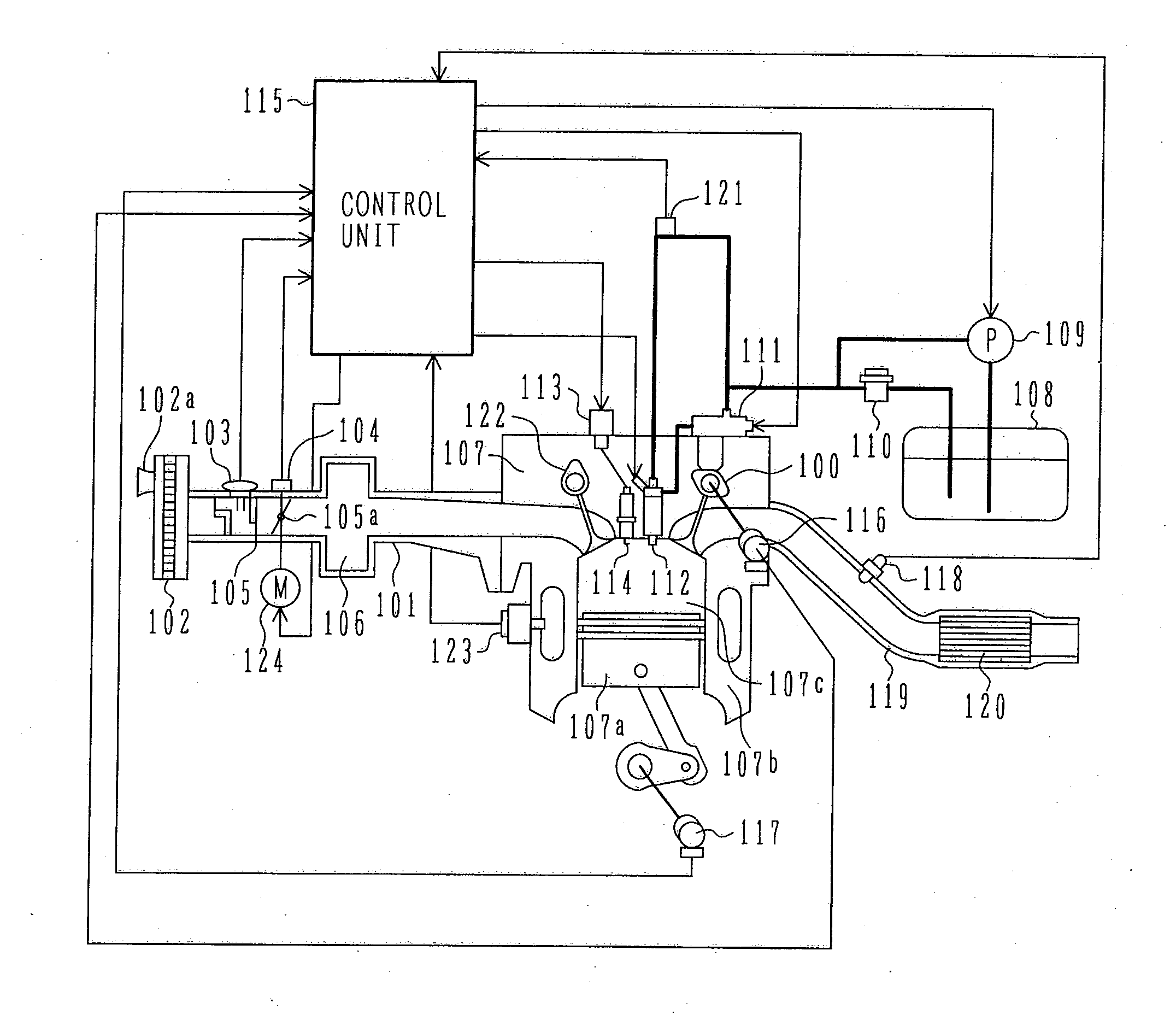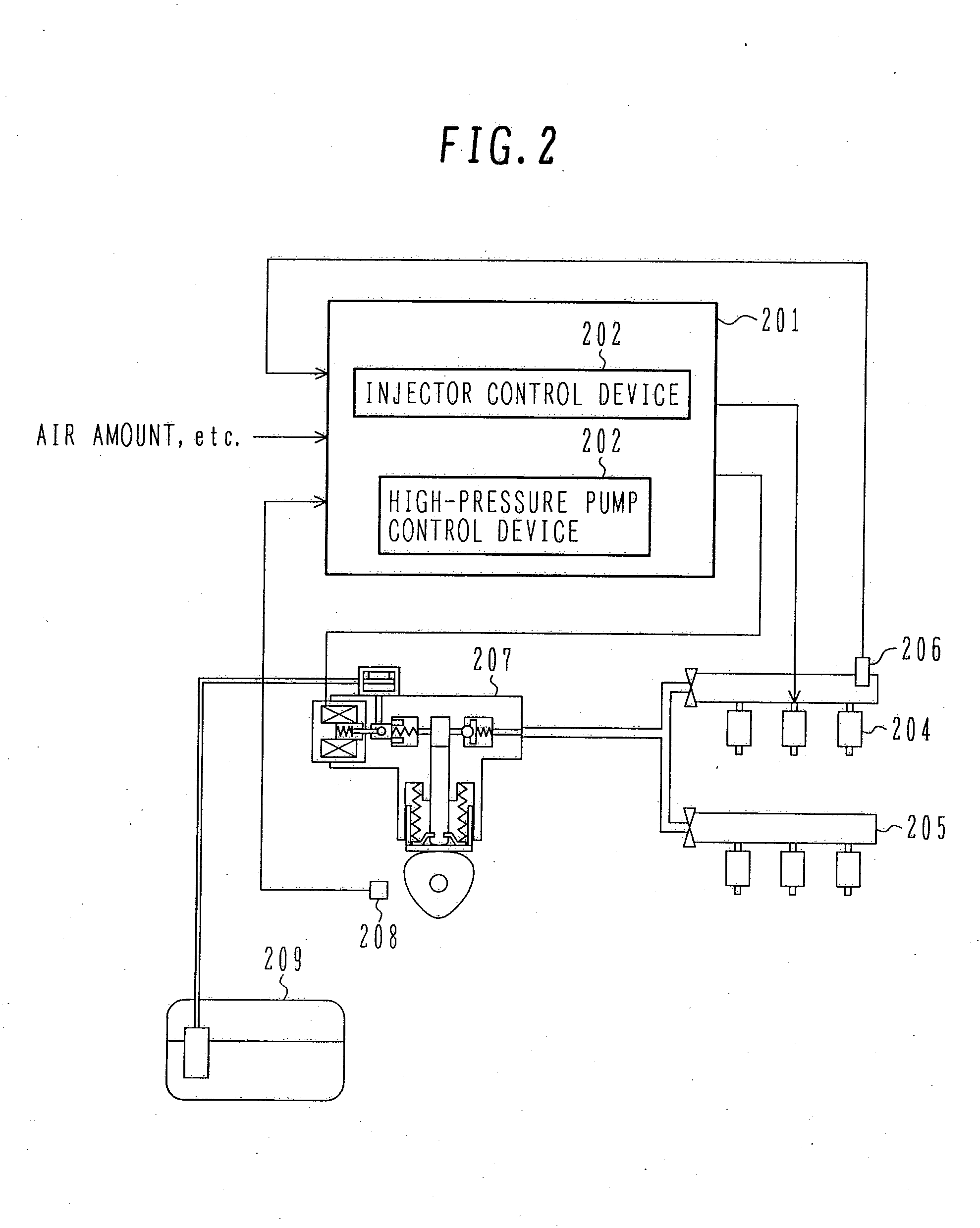Control Device for High-Pressure Fuel System
a control device and high-pressure fuel technology, which is applied in the direction of liquid fuel feeders, electric control, machines/engines, etc., can solve the problems of increased fuel pressure estimation error, incorrect diagnosis, exhaust deterioration, etc., to improve fuel control performance, increase homo-elasticity coefficient estimation accuracy, and improve fuel control performance
- Summary
- Abstract
- Description
- Claims
- Application Information
AI Technical Summary
Benefits of technology
Problems solved by technology
Method used
Image
Examples
first embodiment
[0056]A case where an embodiment of the present invention is applied to startup fuel control will now be described with reference to FIGS. 9, 10A, and 10B.
[0057]FIG. 9 shows an example of a fuel amount correction block for startup. A homo-elasticity coefficient estimation section 901 judges in accordance with the pump controlled variable and crank angle signal or cam angle signal whether the pump discharge amount is not smaller than a predetermined value (is close to a maximum discharge amount preferably), and estimates the homo-elasticity coefficient in accordance with the encountered fuel pressure change and the aforementioned definition. In this instance, the homo-elasticity coefficient may be corrected in accordance with a temperature change from the fuel temperature (or water temperature) prevailing at the time of homo-elasticity coefficient estimation to ensure that the homo-elasticity coefficient increases with an increase in the temperature. The reason is that the value dP i...
second embodiment
[0059]Control and diagnosis performed in consideration of leakage from the plunger will now be described with reference to FIGS. 11 to 14.
[0060]FIGS. 11A and 11B show a pump discharge characteristic and a cause of flow rate decrease. FIG. 11A shows a maximum discharge amount per discharge at various engine speeds. As shown in FIG. 11A, the discharge amount decreases in a low engine speed region and high engine speed region. The cause of such a discharge amount decrease is indicated in FIG. 11B. The flow rate decreases in the low engine speed region because the fuel leaks from a gap in the pump plunger when the engine speed is low. The flow rate of leakage depends on the viscosity of fuel and the pressure within the fuel pump chamber. More specifically, the leakage flow rate increases with a decrease in the viscosity and with an increase in the pressure. It is therefore preferred that the homo-elasticity coefficient be estimated in consideration of leak amount particularly during an ...
third embodiment
[0063]Control and diagnosis performed in consideration of in-cylinder pressure of the engine will now be described with reference to FIGS. 14 to 15.
[0064]FIG. 14 shows in-cylinder pressure changes in the engine. Fuel injection occurs due to the difference between fuel pressure and in-cylinder pressure. The peak of in-cylinder pressure tends to lower when the timing of intake valve closure is retarded. However, when fuel is injected during a compression stroke at startup, control and diagnosis can be performed with increased accuracy by compensating for the in-cylinder pressure.
[0065]FIG. 15 is a block diagram illustrating a fuel control section that is configured in consideration of in-cylinder pressure. An in-cylinder pressure estimation section 1501 estimates an in-cylinder pressure prevailing during fuel injection from an air flow rate, engine speed, and fuel injection timing. The in-cylinder pressure can be estimated, for instance, by preparing a map shown in FIG. 14 and decreas...
PUM
 Login to View More
Login to View More Abstract
Description
Claims
Application Information
 Login to View More
Login to View More - R&D
- Intellectual Property
- Life Sciences
- Materials
- Tech Scout
- Unparalleled Data Quality
- Higher Quality Content
- 60% Fewer Hallucinations
Browse by: Latest US Patents, China's latest patents, Technical Efficacy Thesaurus, Application Domain, Technology Topic, Popular Technical Reports.
© 2025 PatSnap. All rights reserved.Legal|Privacy policy|Modern Slavery Act Transparency Statement|Sitemap|About US| Contact US: help@patsnap.com



